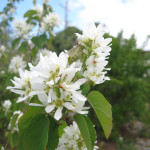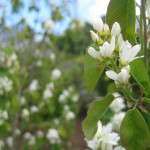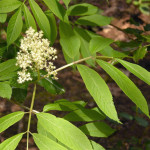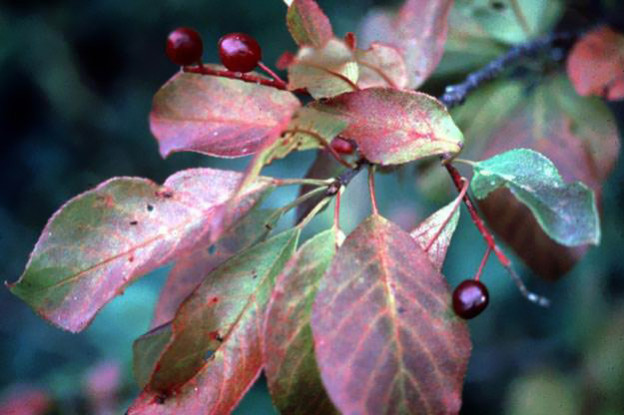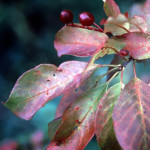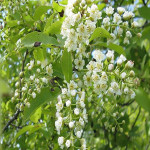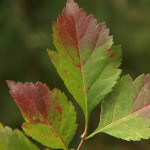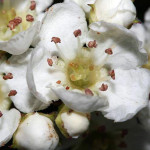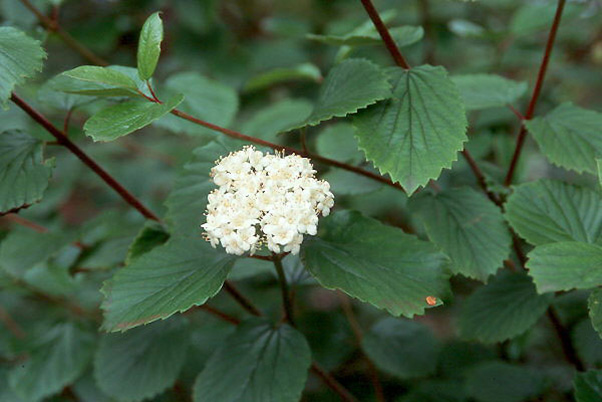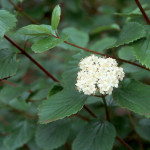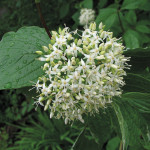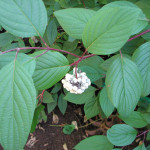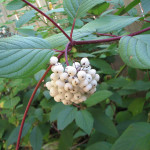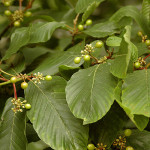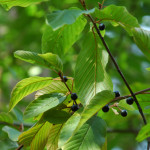Bitter Cherry (Prunus emarginata) is an attractive deciduous shrub to small tree, varying in height from 6 to 45 feet tall. These trees typically live about 30-40 years.
The bark of bitter cherry is smooth reddish brown to grey. Small white flowers bloom in clusters from mid spring to early summer. The fruit ripens from bright red when young to almost black when fully ripe in late summer, and the leaves turn golden in fall.
The bitter fruit is a favorite food for small mammals and birds, and the leaves provide forage for deer. Many pollinators are attracted to the flowers, including the admiral, azure, orange-tip, and elfin butterflies. This tree also provides food for the young of pale swallowtail, spring azure, Lorquin’s admiral butterflies.
Light Requirements: Part shade to sun
Water Requirements: Moist
Ease of Growing: Easy to grow
Growth Rate: Medium-fast
Spreads: Yes
Wildlife Support: Pollinators, Pest-eating insects, Hummingbirds, Birds or Mammals
Mature Height: 30 feet
Mature Width: 20 feet


